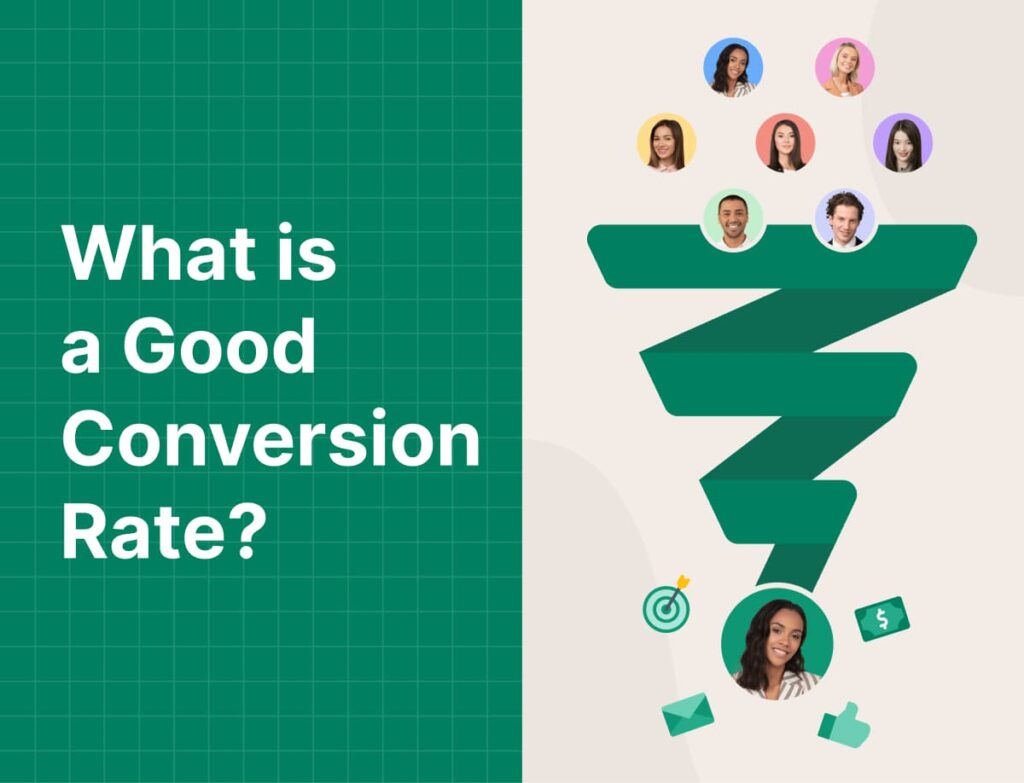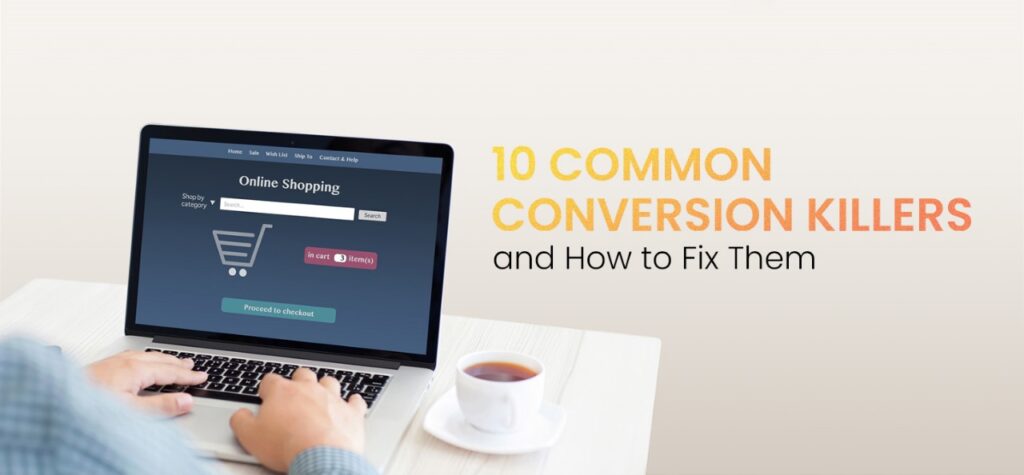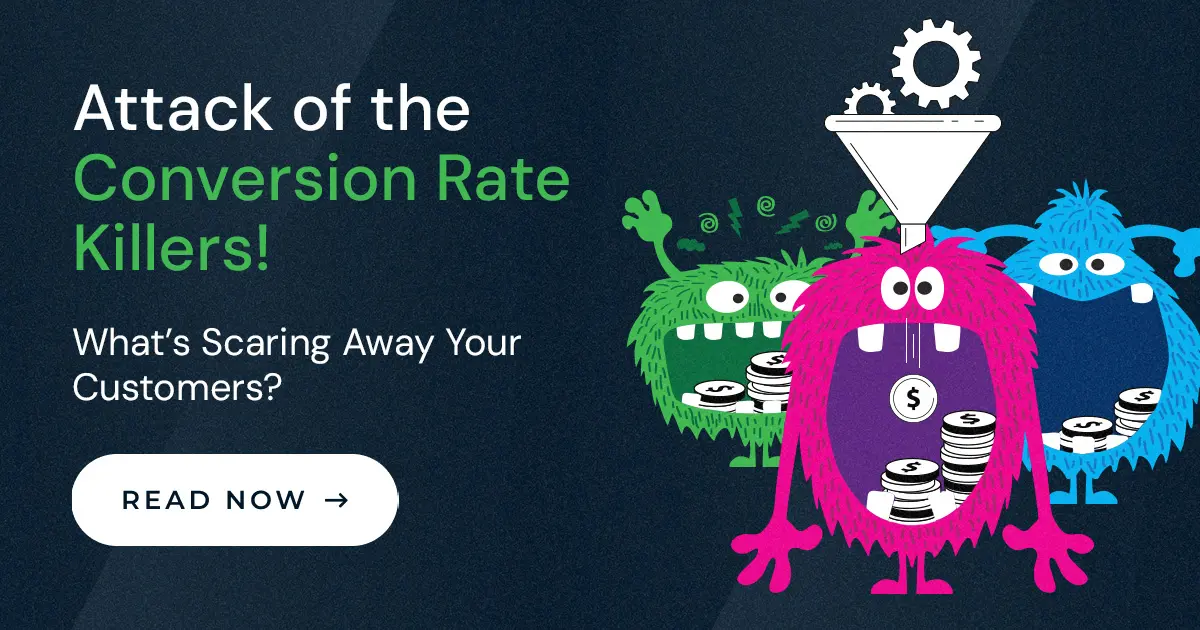People worldwide revel in the thrill of scary movies, spine-chilling horror tales, and visits to haunted houses. They provide a rush, leaving audiences hungry for more. But while we delight in these experiences, none of us truly wish to find ourselves in the shoes of someone tormented by a poltergeist, sewer clown, or chainsaw-wielding maniac. In our everyday interactions, convenience reigns supreme – especially when it comes to navigating websites.
We expect websites to streamline our tasks to such an extent that even a possessed doll could manage them. A low conversion rate may signal that your site inadvertently spooks customers, prompting them to flee – or at least retreat to Google search results.
Today, we’ll delve into the factors influencing conversion rates and highlight 15 perilous website blunders that sabotage your leads and sales.
What’s a Good Conversion Rate?

Ideal Range: Most business websites aim for a 2-5% conversion rate, with 6% or higher considered excellent. However, the actual success depends on various factors.
- Number and Type of Conversions: The metrics you track and their relevance to your business goals matter.
- Industry and UX Design: Your industry norms and the quality of your user experience play crucial roles.
- Customer Service and Average Order Value: Providing excellent service and having a high-value offering can positively impact conversion rates.
- Ease of Contact and Traffic Targeting: Accessibility and targeting the right audience are essential for conversions.
What’s a Bad Conversion Rate?

Concerning Range: Anything below 2% is a cause for concern, and even rates below 5% may not suffice for some businesses.
Determining Needs: Understand your business’s financial metrics like average order value and revenue per visitor to set realistic conversion rate goals.
Low Conversion Rate: What’s Scaring Your Customers?
1. Dark and Sinister Images!
- Avoid low-quality or irrelevant images that detract from your website’s professionalism.
2. Zombified Page Speeds!
- Ensure fast loading times to prevent users from bouncing to competitor sites.
3. Abandoned Hotel of Content!
- Maintain a consistent and updated blog to engage visitors and build credibility.
4. Franken-Grammar!
- Poor grammar and spelling mistakes erode trust and credibility.
5. Paranormal Accessibility!
- Ensure your website is accessible to all users, including those with disabilities.
6. Slimy Sales Copy!
- Avoid aggressive sales tactics that may deter potential customers.
7. Nightmarish Navigation!
- Simplify navigation to guide users smoothly through the conversion process.
8. Invasion of the Personality Snatchers!
- Maintain consistency in brand voice and tone to resonate with your audience.
9. Mummified Design!
- Keep your website’s design modern and user-friendly to avoid appearing outdated.
10. A Shadowy Presence!
- Clearly communicate your business’s identity and offerings to visitors.
11. Tales from the Responsiveness Crypt!
- Ensure your website is responsive and functional across all devices.
12. Psycho Pop-Ups!
- Use pop-ups sparingly and considerately to avoid annoying users.
By addressing these factors, you can overcome conversion rate challenges and create a more engaging and profitable website.
13. Haunted Checkout Maze!
A complex or confusing checkout process can lead to high abandonment rates, akin to navigating a labyrinth. Tools can help analyze drop-off points and identify areas for improvement. Common checkout pitfalls include unclear navigation, hidden fees, mandatory account creation, excessive form fields, and limited payment options.
14. The Pit of Proof!
Building trust and credibility is crucial for conversions. Provide evidence such as About pages, case studies, client logos, and testimonials to reassure potential customers. Social proof, including reviews and influencer endorsements, can also bolster confidence in your brand.

15. Lights Out!
Website downtime is a significant barrier to conversions. Various issues, from server problems to cyber attacks, can cause outages. Regular monitoring and maintenance are essential to prevent downtime and minimize its impact on business operations.
In conclusion, addressing these conversion rate killers can significantly improve your website’s performance. While low conversion rates can be daunting, they often have simple solutions that don’t require a complete redesign. By identifying and addressing issues systematically, you can enhance user experience and boost conversions. If you do decide on a redesign, we’re here to help you navigate the process seamlessly.

Leave a Reply